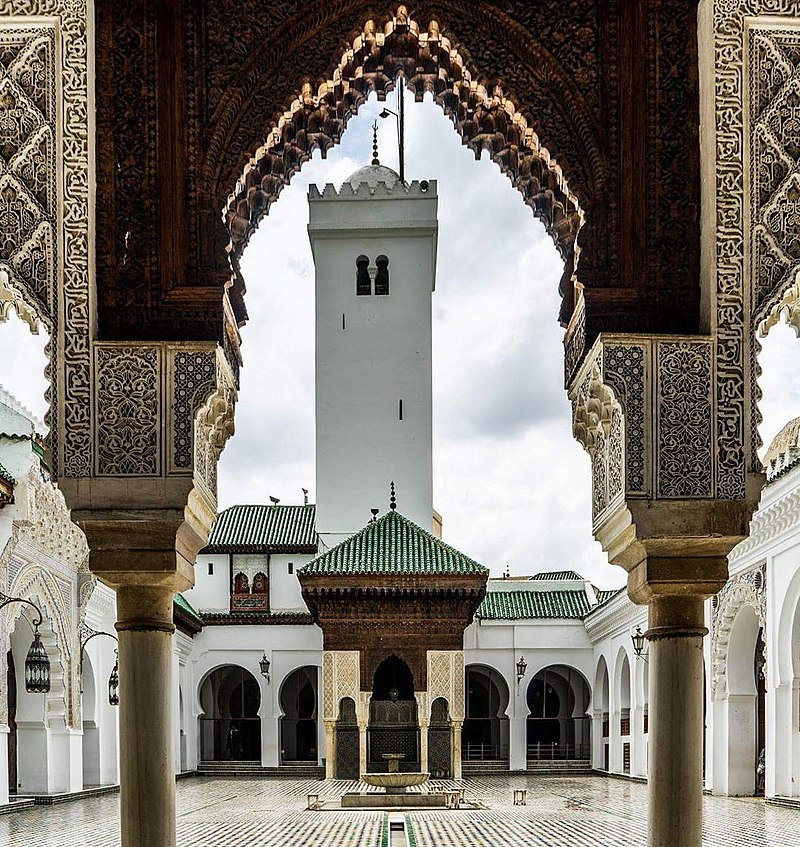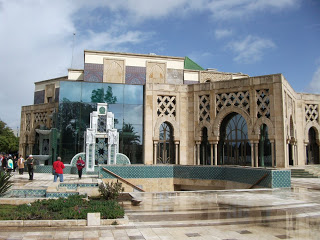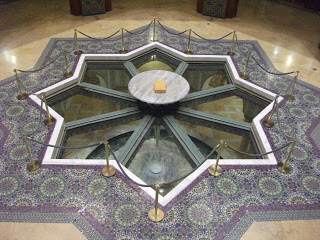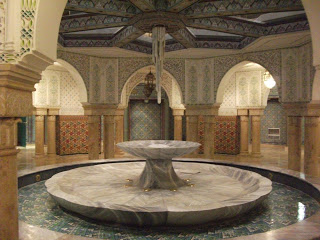My aim with these blogs about Spain was to show the art and writing of Spain during its history, but so far I have been talking mostly about warfare, and in the next few weeks I will be writing about 3 more waves of African invasion. But I want to stop here and take stock of where we are and maybe show you something better than warfare.
We have reached the first millennium after the birth of Christ, but peace on Earth was as far away as it was in Roman times. The Catholic Church covered Europe north of the Mediterranean, whilst Islam and the Arabs ruled its eastern and southern shores. The pope in Rome was now emperor of Christendom, and the Church was about to show its muscle.

From about 1020, with papal backing, the Normans invaded and captured Muslim controlled Sicily before going on through many campaigns to take control of the toe and heel of Italy, which had been under the control of the other half of the old Roman Empire, the Byzantine Empire.
In 1066, again with papal encouragement, the Normans invaded England, which had been struggling with repeated Viking attacks, threatening to turn it into a pagan country. But in 1070, the Seljuk Turks took Jerusalem and began to torture the Christians who lived there. By 1095, the mistreatment of the Christians had become so bad that Byzantine Emperor Alexios I sent his envoys to Pope Urban II asking for help from western Christians to liberate the region from the Turks. Pope Urban II toured Gaul to encourage support for a campaign to free Jerusalem from Muslim control. He gave a historic sermon at the Council of Clermont when he exhorted the nobles to embark on the journey to "liberate" Byzantines, or Eastern Christians from the "pagan race." The First Crusade was underway.
We can’t look at the history of Spain without mentioning the other Abrahamic religion. Two of Rome’s emperors were from Italica in southern Iberia; Trajan and Hadrian, (Theodosius may have been a third emperor born in Italica, but it has been disputed.) and it was during the reign of Nero that the Jews first rebelled in 66. The Jews had lived in Canaan since the late second millennium BCE, but after the crucifixion of Jesus, the Romans tightened their control of the Jews in the area, and unrest against the Romans grew. Revolt erupted again in 132 led by Bar Kokhba, and it quickly spread from central Judea across the country, cutting off the Roman garrison in Aelia Capitolina (Jerusalem). Despite arrival of significant Roman reinforcements, initial Jewish victories over the Romans established an independent state over most parts of Judea Province that lasted two years.
Hadrian was emeror by this time and he gathered a force made up of six full legions to invade Judea in 134, and in the resulting battle 580,000 Jews perished, with many more dying later of hunger and disease. Many Judean war captives were sold into slavery and the Jewish communities of Judea were devastated to an extent which some scholars describe as genocide. In an attempt to erase any memory of Judea or Ancient Israel, Emperor Hadrian wiped the name Judea off the map and replaced it with Syria Palaestina. He further barred Jews from entering Jerusalem, and from then on they were a people without a homeland and were scattered to every part of the known world.
But amidst all this warfare, the seeds had been sown for a better future. The Caliphate of Córdoba had been the centre of learning and culture for around 100 years, far outshining any other European city. Its libraries were full of the books of Greek, Egyptian and Arabic knowledge, and for a while, it was the envy of the world. There were other centres of learning in Iberia which were gathering a reputation, too. Toledo and Granada had several libraries each, which in total contained some 3,000 books. In the century to come, Toledo would become a centre for the translation of the books written in Arabic and Greek into the new language that was forming from this mix of old-world tongues; Castilian.
The establishment of the first dedicated higher learning institution for teaching and study was to be in a very unlikely place. Initially founded as a madrasa or mosque in 879, Al-Karouine in the ancient walled city of Fez, attracted mathematicians, astronomers, philosophers and religious leaders to teach or study. The 12th century cartographer, Mohammed al-Idrisi lived in Fez around 1130 and travelled throughout the whole of the Mediterranean area. It was Idrisi’s maps that aided European exploration for the next 200 years.
 Al-Karouine
Al-Karouine
Bologna established its university 1086 followed by Oxford, England in 1096 and the competition to attract the finest minds to teach became fierce. The earliest Christian centre for teaching and study in Iberia was the Studium Generale in Palencia in 1212. It was endorsed by King Alfonso VIII of Castile, who was one of many kings who would encourage the translation of the abandoned Arabic libraries. In the first centuries of the new millennium, copies of Ptolomy’s star catalogue, the Almagest which had been lost to Christendom, turned up written in Arabic with corrections and additions by Al-Sufi, possibly the greatest of the Islamic astronomers. Al-Sufi's treatise on star cartography, or uranography, (published in 903) was called The Book of Constellations of the Fixed Stars (Kitab Suwar al-Kawakib al-Thabita) and became a classic of Islamic astronomy. It was al-Sufi who gave all the stars in the constellations the Arabic names they still bear today.
With the encouragement of subsequent popes other Studiums opened in Alcalá de Henares and Valencia, and masters who taught in one could go to any of the others and teach or study. But the most important thing about the Studiums, was that they were open to Christians, Jews or Muslims, without prejudice. In fact, all three aided in the translation of books left by the Moors. In the new Iberia, the Jews became leaders in medicine, and some of the Arabic legal statutes were adopted by Christian kings. Finally, it was an Arab, Hasan al-Rammah, a chemist and engineer working in the Mamluk Sultanate, who around 1250 made the first drawings of weapons which used gunpowder.
We all know that the lands around the Mediterranean have been a source of ambition, warfare and slavery, with empires rising and falling and constant bloodshed. But the most lasting impression of these times is in the architecture the Arabs left behind. The beauty of their buildings is beyond doubt, and even more impressive considering that most of Northern Europeans at this time lived in primitive huts. Perhaps with a little more time, peace could have been the outcome.
Even in the present day, there are those who are trying to bring about peace. The king of Morocco and the Junta de Andalucía came together 1998 to create a religious forum based on the principles of peace, tolerance and dialog. There are few organizations in the world that represent the three Mediterranean cultures of Islam, Catholicism and Judaism. Their aim is to find common ground for stability between these religions and they pursue it with dedication and openness. The Foundation has been endorsed by the Peres Centre for Peace, the Palestinian National Authority and other individuals and institutions in Israel, committed to promote understanding resolve conflict. They also have the support of the European Union, but clearly, this is an enormous task given present day tensions.
Their base is in Seville amidst the now disused Expo ‘92 exhibition buildings on La Isla de La Cartuja. At first sight, it looks as though it is put together haphazardly, as though the Lego that it was built from was a mix of two different building sets. But it is what is inside that is important.

The building itself is designed to recreate the Islamic influence evident all over Spain, but to modern standards. There is no thousand years of wear and tear here. It’s all brand new. The first view of the interior is very impressive, with a highly polished marble floor and a huge grey, eight pointed star inlaid with ceramic tiles in the centre of the room. Around the marble fountain are glass panels set into the floor admitting light to the floor below and permitting a view of the marble circular pool directly below the star.

The first floor is where the women would pray unseen from the men below. The women´s gallery is an illustration of the finest carpentry and painting as practiced by the artisans of antiquity.

Above this, is a wooden dome composed of beautifully painted timbers and highly polished panels.

Looking down from the woman's gallery, you can see the intricate and beautiful design of the ground floor mosaic and the glass panels designed to give the impression of still water. Below the glass, is the basement level, with a crystal stalactite dribbling water into a still pool. In a circle around this tranquil scene are beautifully decorated arches leading to side rooms for private prayer or meditation.

By comparison, the Alhambra and The Mesquite in Cordoba are undeniably impressive, but dulled by 700 years of use, the paint and carvings bearing the patina of smoky candles and oil lamps. The colours here are bright, clear and vibrant.

On the first floor, in corners off from the woman's gallery are carved ceilings with delicate painted scenes in astounding detail showing the mastery of Islamic art.
The foundation has a high ideal, but it’s in the right place. The straits have always been the hotspot for immigration or invasion, and if some respect and tolerance can be taught here, then the next thousand years might be better.